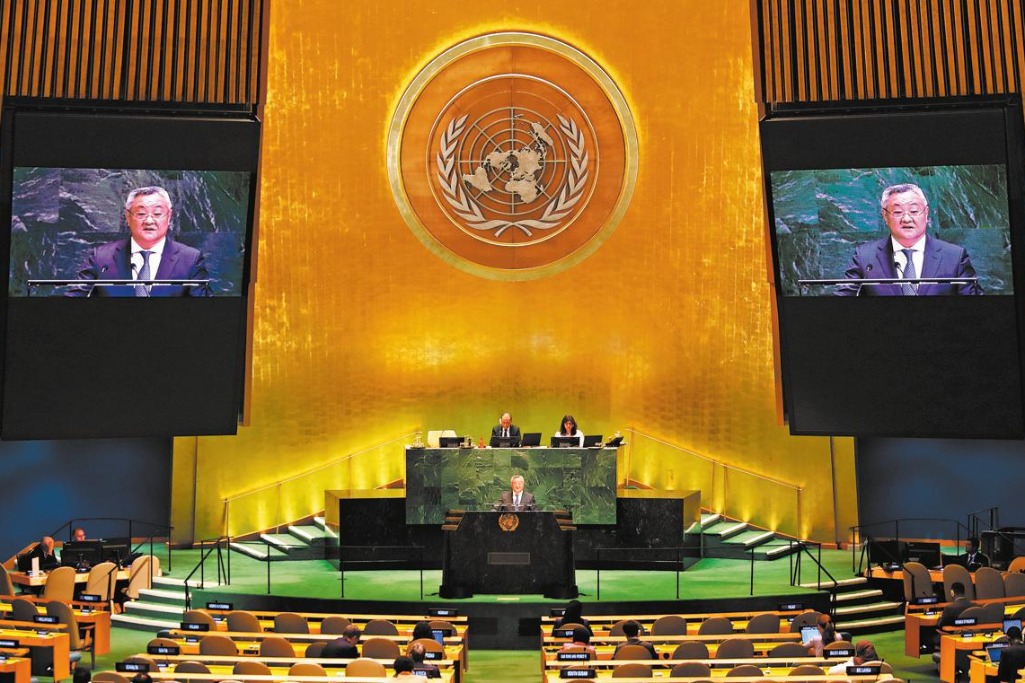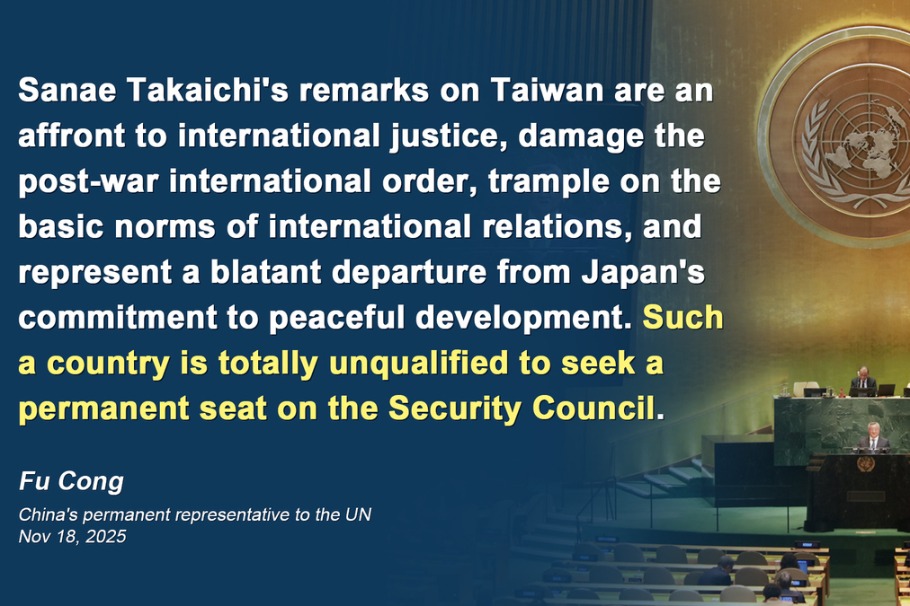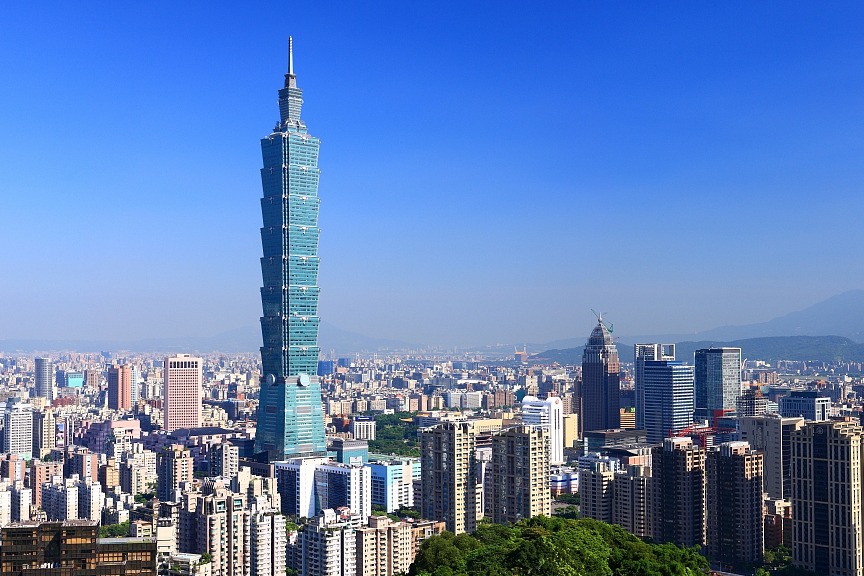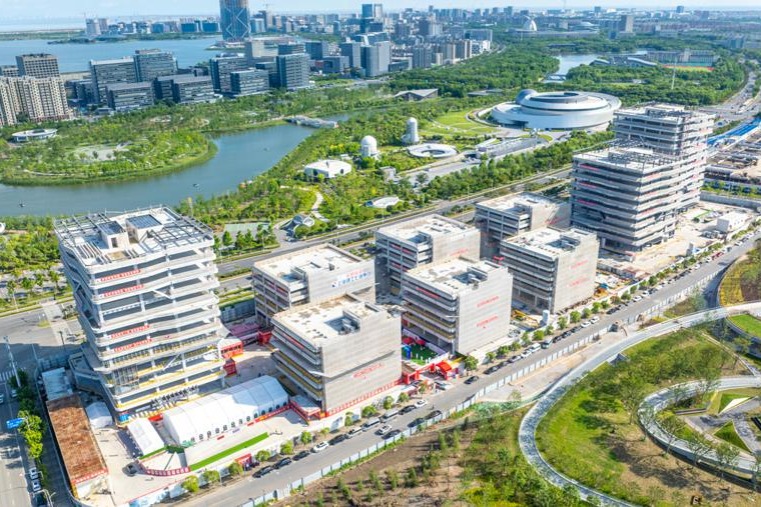Minilateral advantages
The evolving model of China-ASEAN partnership amid the narrowing latitude for hedging


While commemorating the 80th anniversary of the end of World War II, the conspicuous decline of "Pax Americana" is fully evident. Dysfunctionality of the multilateral institutions which were once commissioned to serve the interests of the World War II victors further exposes the incoherence of the prevailing global order. To say the least, it is out of sync with the emerging global trend of multipolarity.
Global South countries are becoming increasingly vocal in voicing their concerns and aspirations through the platform of "BRICS+", while the biggest economy among the developing countries — China — has enlightened the world with its own template of being a global player. Through the Belt and Road Initiative endeavor of connectivity, China has secured a wave of strong endorsement from more than 150 countries and over 30 international institutions across the world, albeit under the incessant toxic vilification by the collective West.
Over the past decade, China has actively expanded its role in global connectivity and multilateral cooperation through initiatives such as the BRI. Feeling threatened by such a wide-encompassing "charm offensive" of China, Washington has made a convenient wedge of Beijing's assertiveness on the country's core interests to alienate China from the international community, particularly its top trading partner, the Association of Southeast Asian Nations.
In this regard, the territorial disputes over some parts of the South China Sea have been exploited to the hilt. Being a distant non-stakeholder, the United States, alongside its allies, has consistently been conducting so-called freedom of navigation operations (FONOPs), with its warships saber-rattling across the South China Sea. Yet, the busy international sea lane, which handles about one-third of global seaborne logistics remains open and unimpeded.
The sheer display of military muscle by the US and its allies through their FONOPs is part of the US' deterrent security playbook intended to contain China. It may satisfy the psychological needs of certain regional state actors' hedging strategies, but is proven impotent in stifling the expansive outreach of China in the region.
The China-ASEAN partnership continues to ride high with the completion of negotiations on the China-ASEAN Free Trade Area 3.0 where new economic drivers such as the digital economy, green transformation and electronic commerce are all set to take the economic agenda to a higher level, making it sustainability-centric.
While ushering in the ASEAN Community Vision 2045, launched in May 2025, beyond the promise of drawing a long-term strategic road map for ASEAN to become a resilient, innovative, dynamic and people-centered community by 2045, the bloc's dire need of a regional security architecture to address the gamut of non-traditional security threats can ill-afford to be glossed over. This security concern is not synonymous with the fostering of security pacts with external powers or deployment of foreign troops and military assets in the region as defined by the conventional mindsets. It aligns more with the aspirations of ASEAN Political-Security Community underscored in the ASEAN Community Vision.
To this end, it matters more to the ASEAN member states if priorities are rightly set to address the challenging exigencies, ranging from food, energy and climate-induced insecurities, to cross-border terrorism and crime, alongside public health crisis response. Like many other emerging economies and developing countries of the Global South, ASEAN is generally straitjacketed by the constraints of wherewithal and technology capacity.
A case in point is the increasing unsustainability of agricultural production in ASEAN to feed its growing population. Despite the robust GDP growth, the bloc is still grappling hard with the grave concern of undernourishment affecting millions of people. The exigency is further vulnerable to climate change, which could drive down the regional GDP by 11 percent by 2100 if left unchecked. What appears more disastrous is the potential massive displacement of 87 million people it might cause in high-risk flood-prone areas in Indonesia, Malaysia, Myanmar, Thailand and Vietnam.
In this context, the enduring China-ASEAN partnership is, in itself, a coveted edge that ASEAN can leverage to mitigate the pressing security concerns with China's technology prowess and alternative source of multilateral development finance.
From the perspective of the global majority, including ASEAN, the New Development Bank, alongside the Asian Infrastructure Investment Bank, offers coveted relief to the development gaps confronting the emerging economies. The two multilateral development banks stand out as viable alternatives to the World Bank and the International Monetary Fund in addressing the developmental priorities of the Global South. The provision of local currency lending by the New Development Bank has timely answered the need for local currency finance across the Global South. President Donald Trump's preemptive intimidation of imposing 100 percent tariffs on BRICS members for ditching the use of the dollars in cross-border transaction settlement does not seem to have stemmed the tide.
His capricious and incoherent "reciprocal tariffs" announced in April 2025 have, on the one hand, thrown the entire World Trade Organization-centric global free trade system into disarray, alongside alienating friends and foes alike. On the other hand, his insistence on having bilateral negotiations with respective tariff-hit countries, particularly the worst-hit ASEAN member states, on individual tariff terms looks set to provide the White House with a window of opportunity for further "arm-twisting". His silence to the proposition of Malaysian Chair of ASEAN to have an ASEAN-US summit on the issue has further rippled the uncertainties induced thus far.
Against such an unsettling backdrop, the latitude for ASEAN to stay steadfast with its centrality and its hedging strategy of not taking a side in the Sino-US geopolitical rivalry is set to be increasingly difficult to maintain. The liberty to trade with the US' "rival" will again be called into question.
In anticipation of such an acid test, China and ASEAN should consider bolstering their partnership multidimensionally with more functionary minilaterals such as the China-driven Mekong-Lancang Cooperation in addressing the various common challenges. These minilaterals are not intended to favor any specific ASEAN member states but to accommodate their respective readiness and diverse priorities in mitigating the arising exigencies.
In the case of the Mekong-Lancang Cooperation mechanism under the framework of Mekong Cooperation, it is renowned as a subregional minilateral that consists of China and countries along the Mekong River, namely, Cambodia, Laos, Myanmar, Thailand and Vietnam.
Time and again, minilaterals have been proven more pragmatic than multilateral entities involving full participation of all the member states in addressing security risks of urgency. This is particularly so when the multilateral entity needs to grapple with diverse priorities, aspirations and interests. In many instances, consensus building is a lengthy process which may lead to nowhere while the exigencies at hand can wait for nobody.
ASEAN, being a comprehensive strategic partner of both China and the US, shouldn't be overly wary of being labeled as one drawn into the orbit of either power's diplomacy.
By engaging with both major powers even-handedly through development cooperation and value creation, ASEAN can seek to free itself from the stranglehold of a zero-sum game. After all, the proof of the pudding is in the eating. Ultimately, it's the end result contributing to the well-being of ASEAN's 680 million people that matters.

The author is president of the Belt and Road Initiative Caucus for Asia Pacific. The author contributed this article to China Watch, a think tank powered by China Daily. The views do not necessarily reflect those of China Daily.
Contact the editor at editor@chinawatch.cn.


































